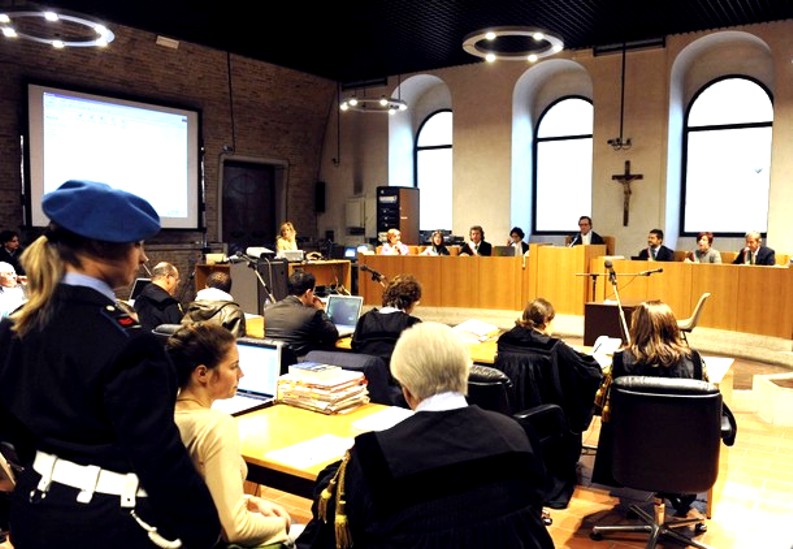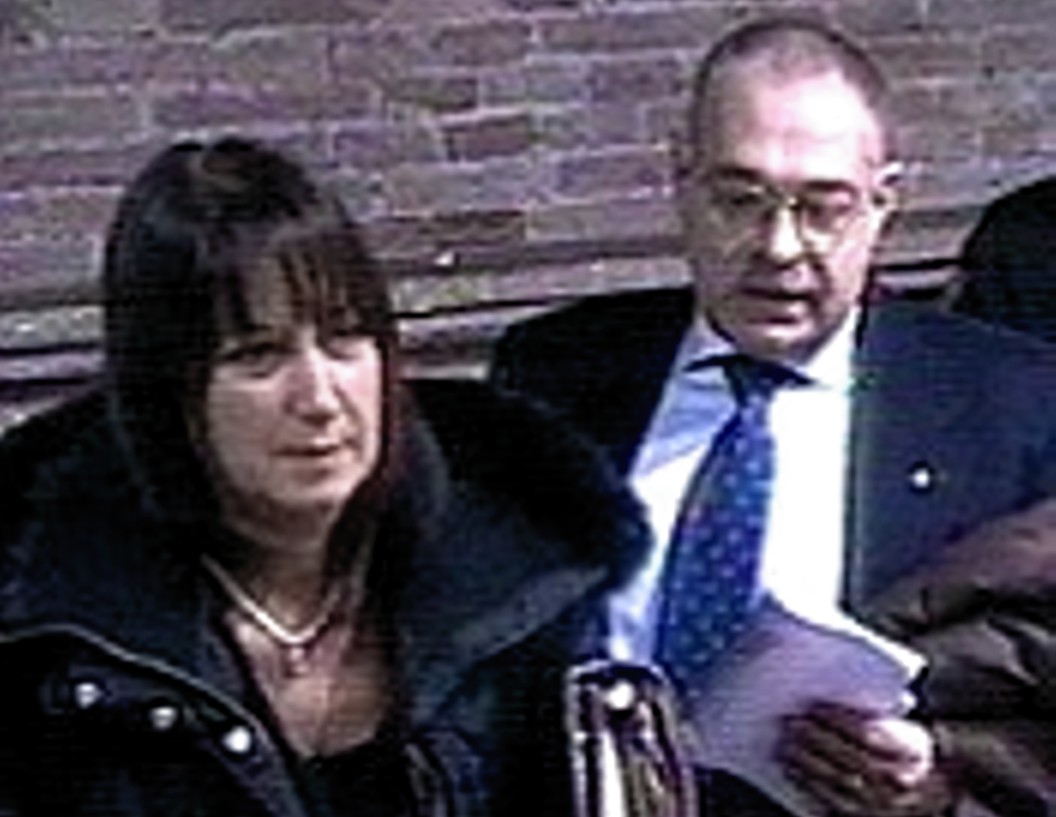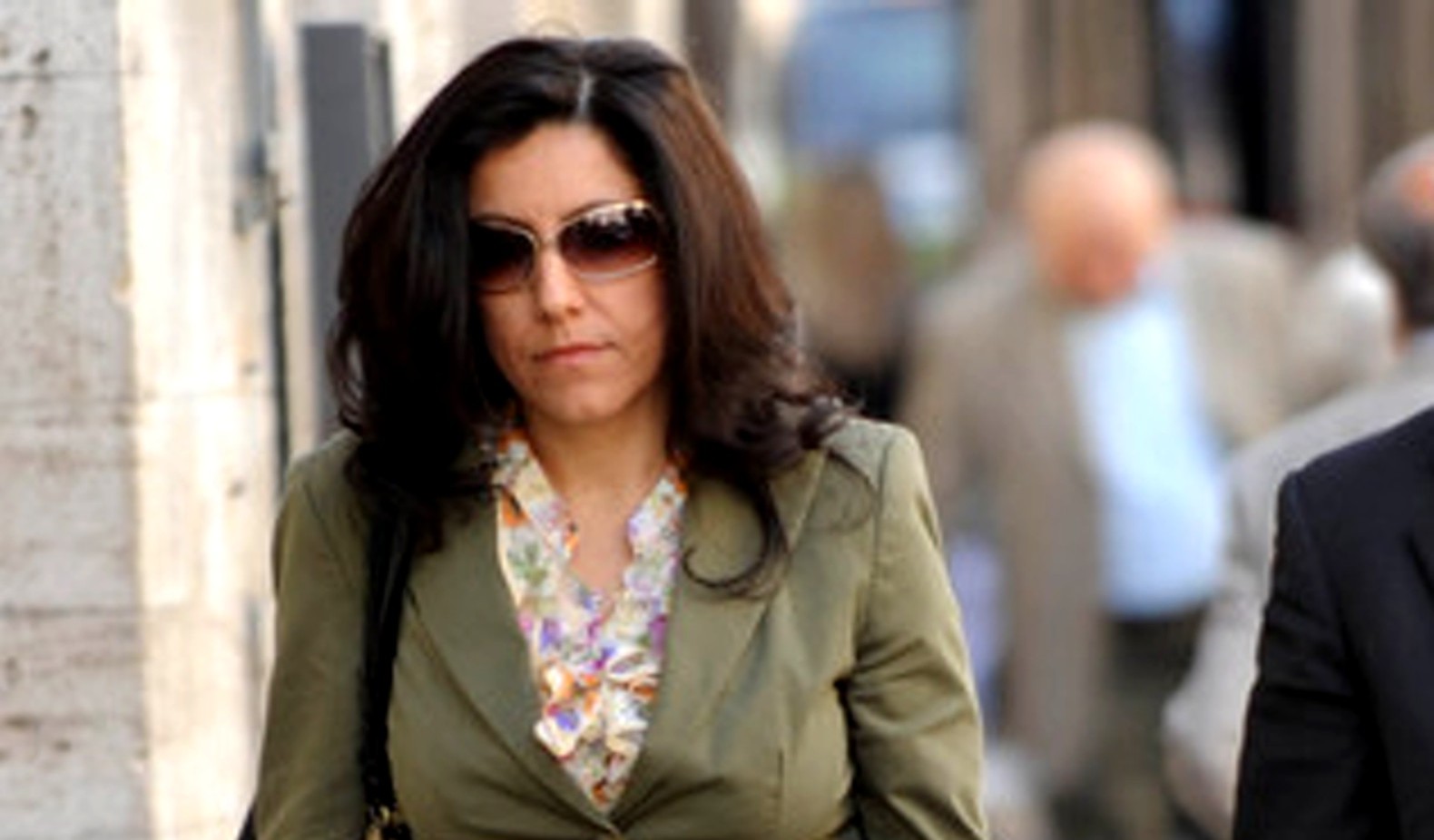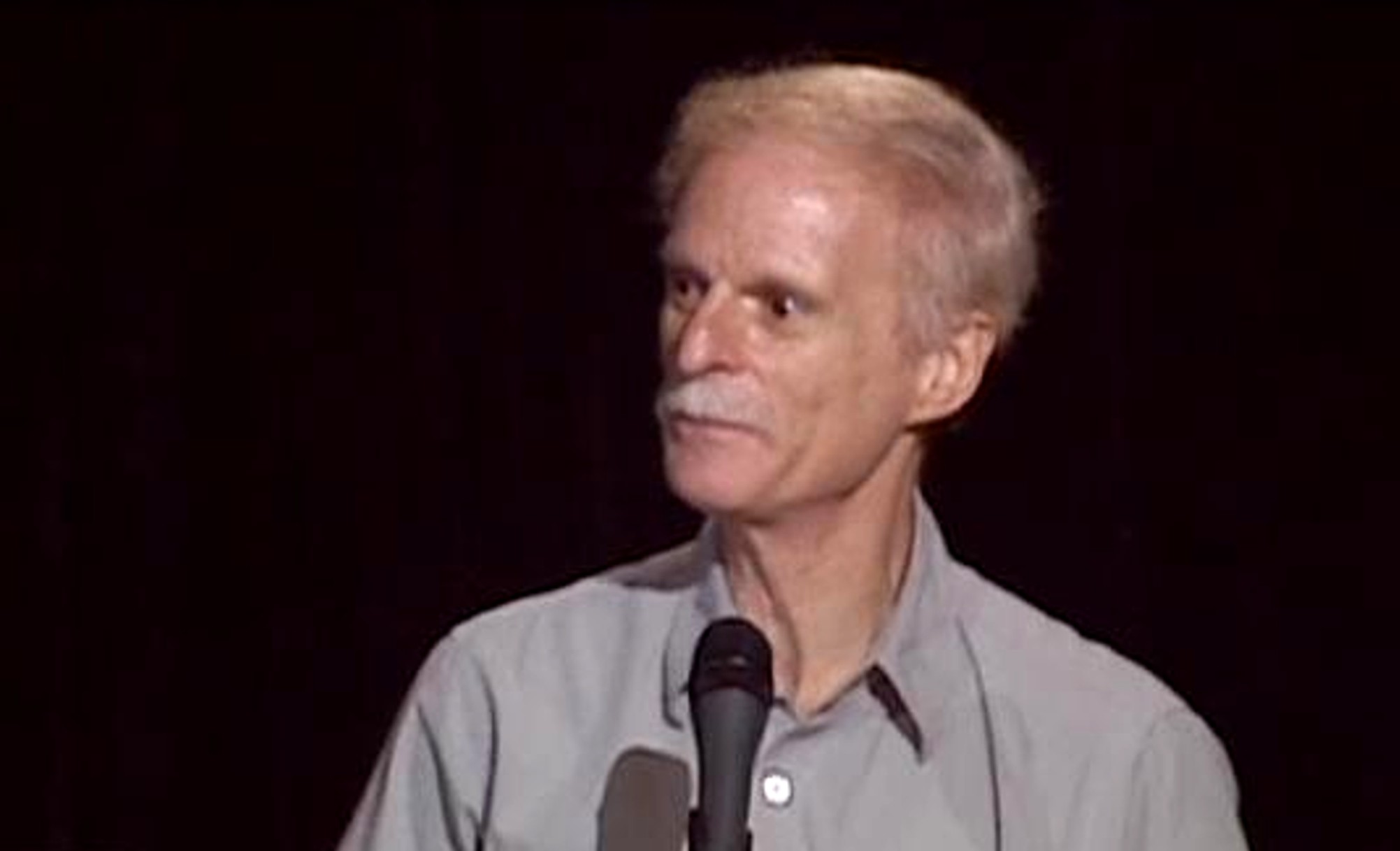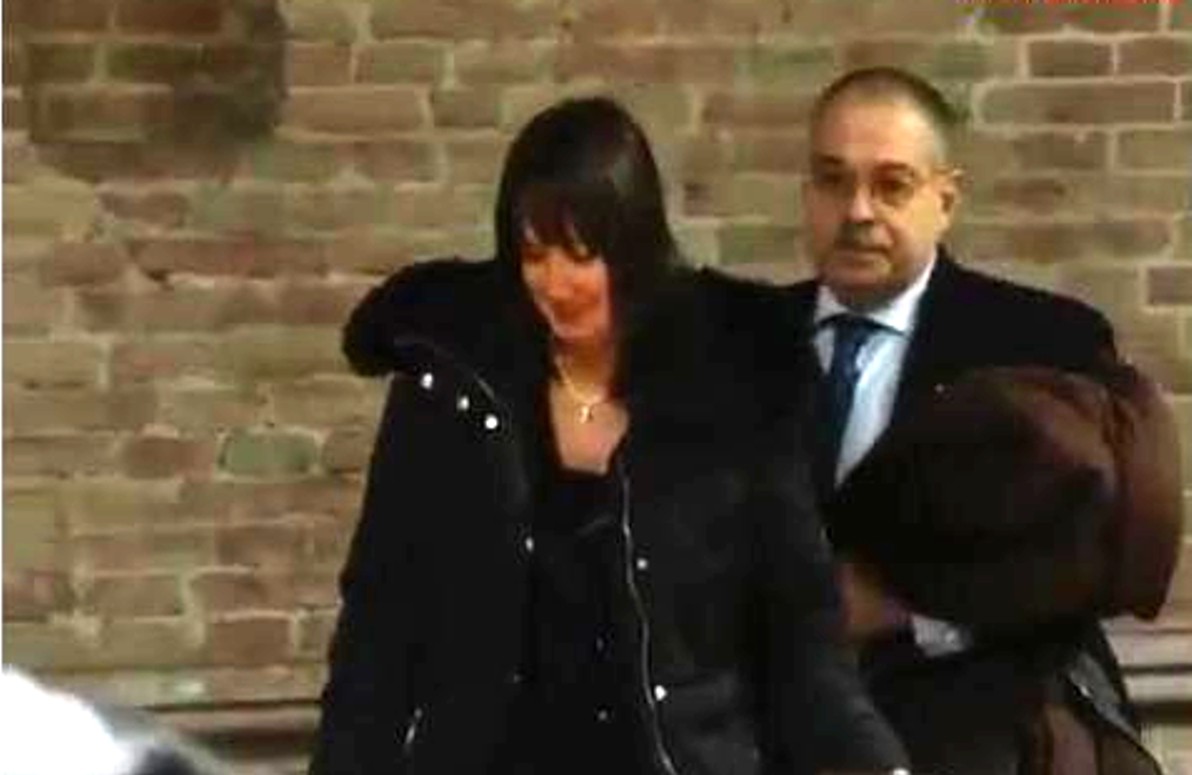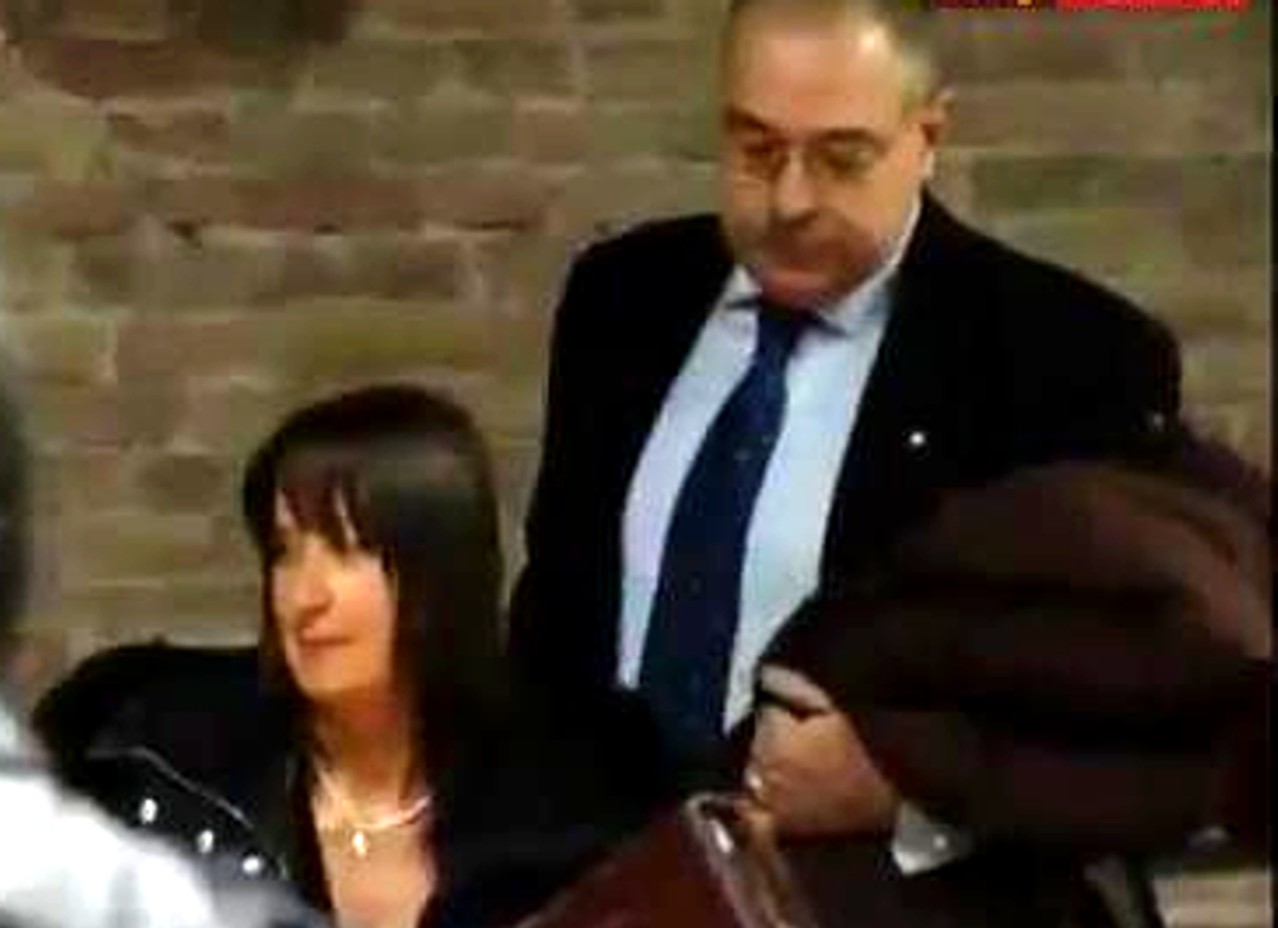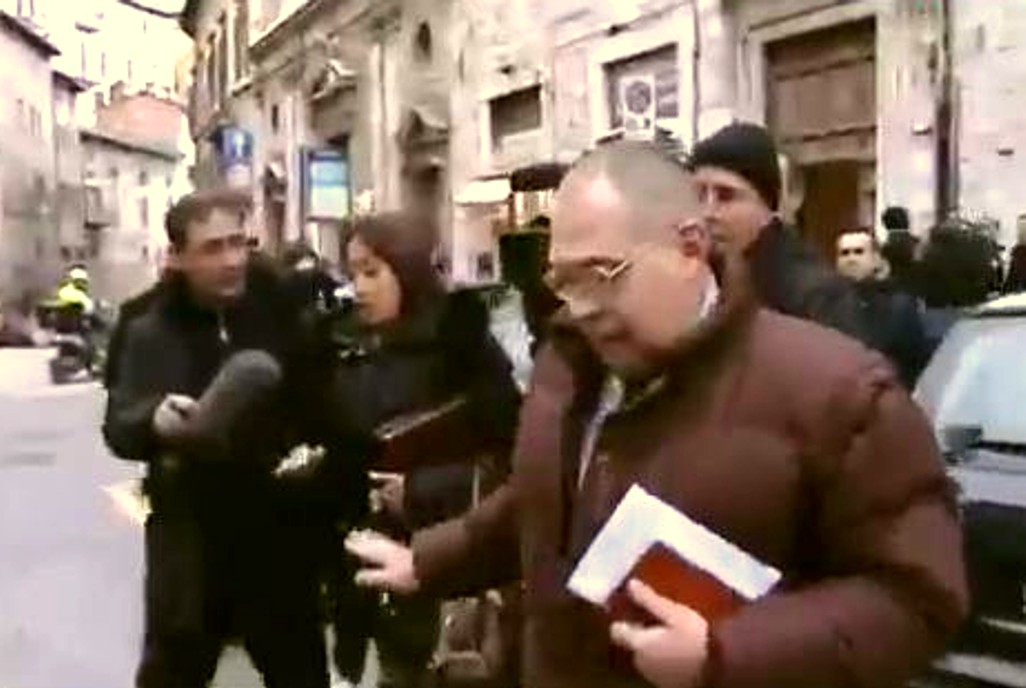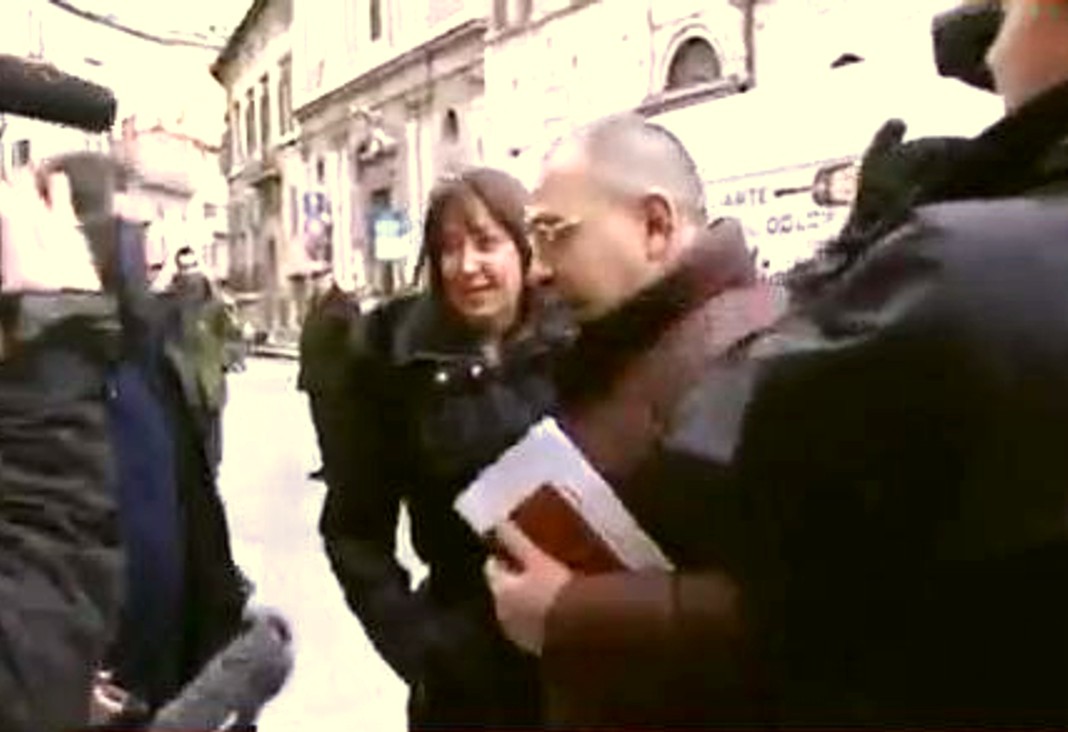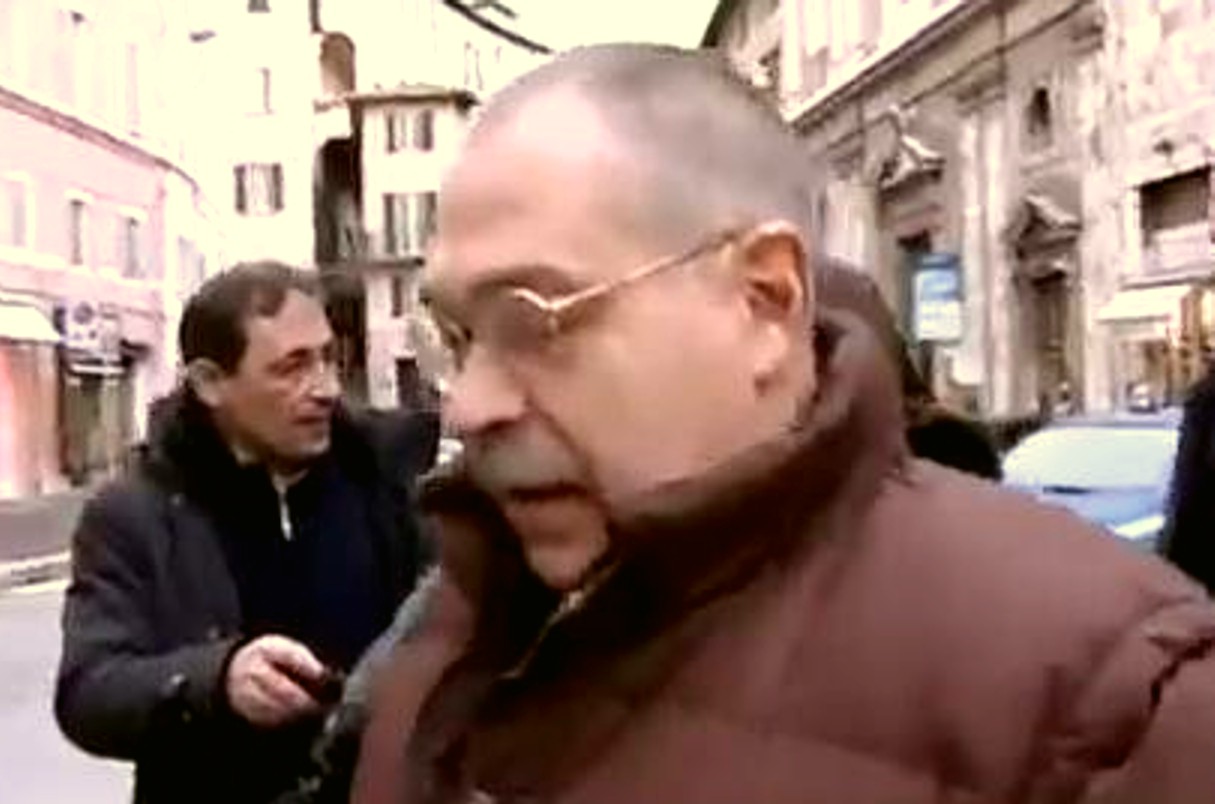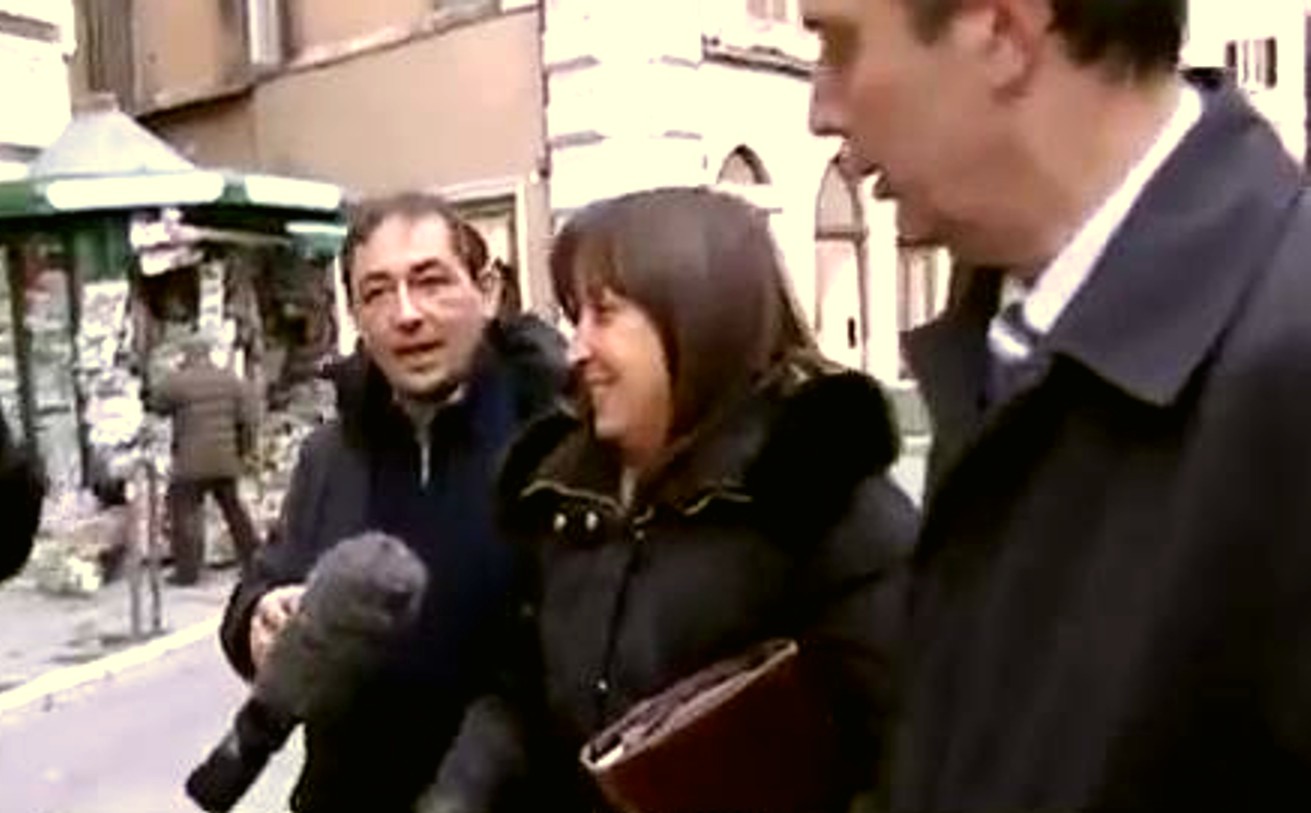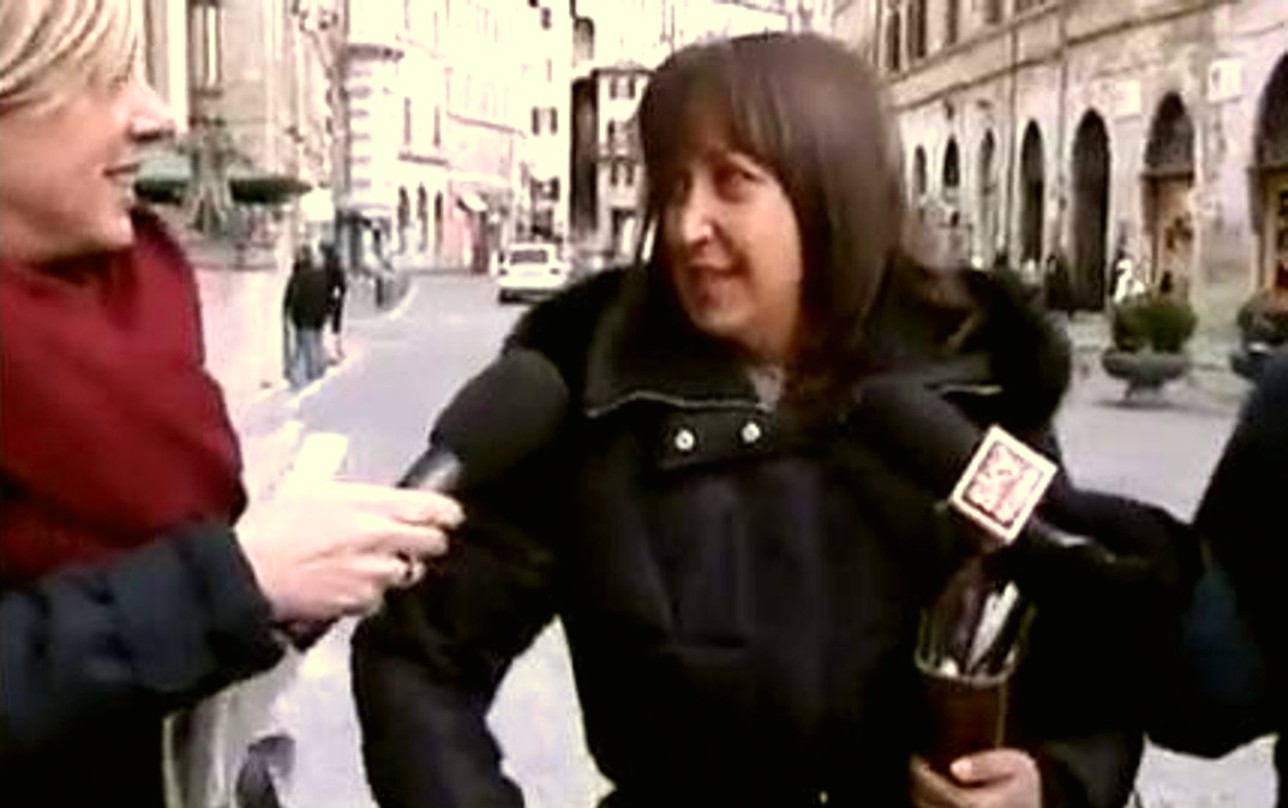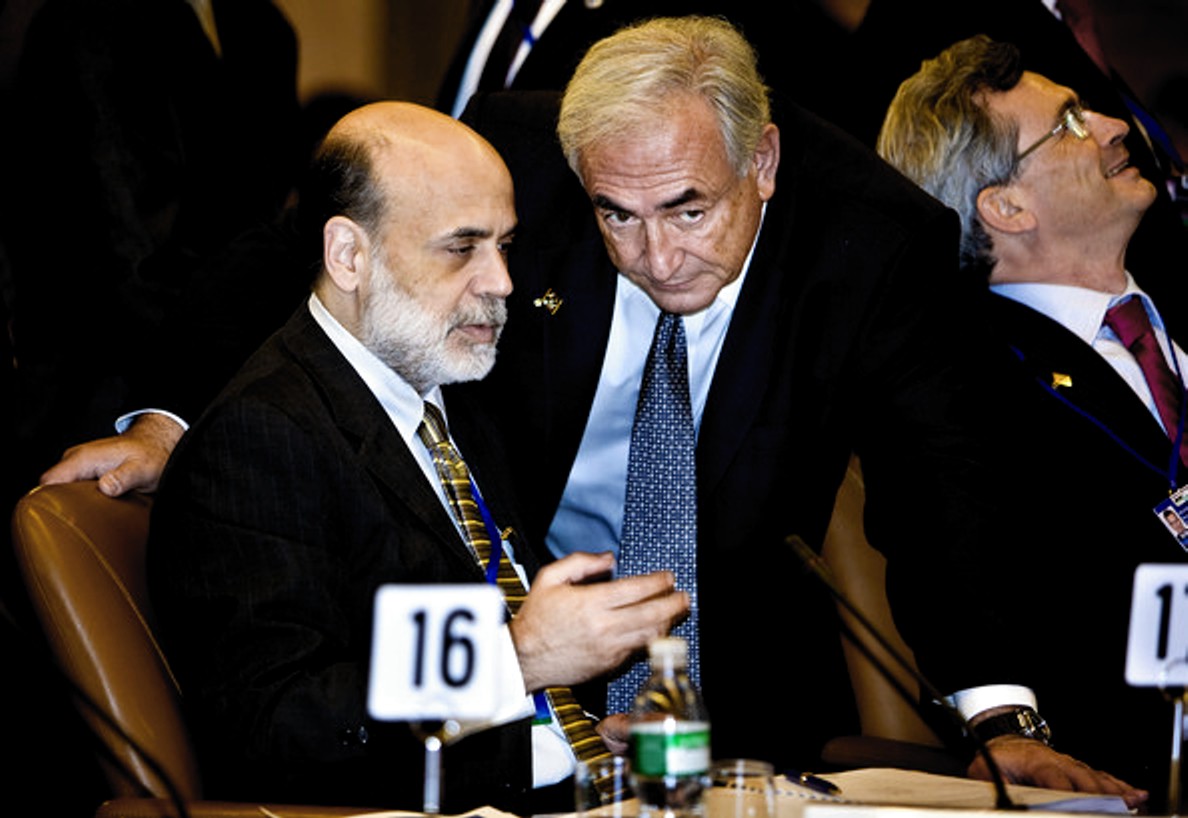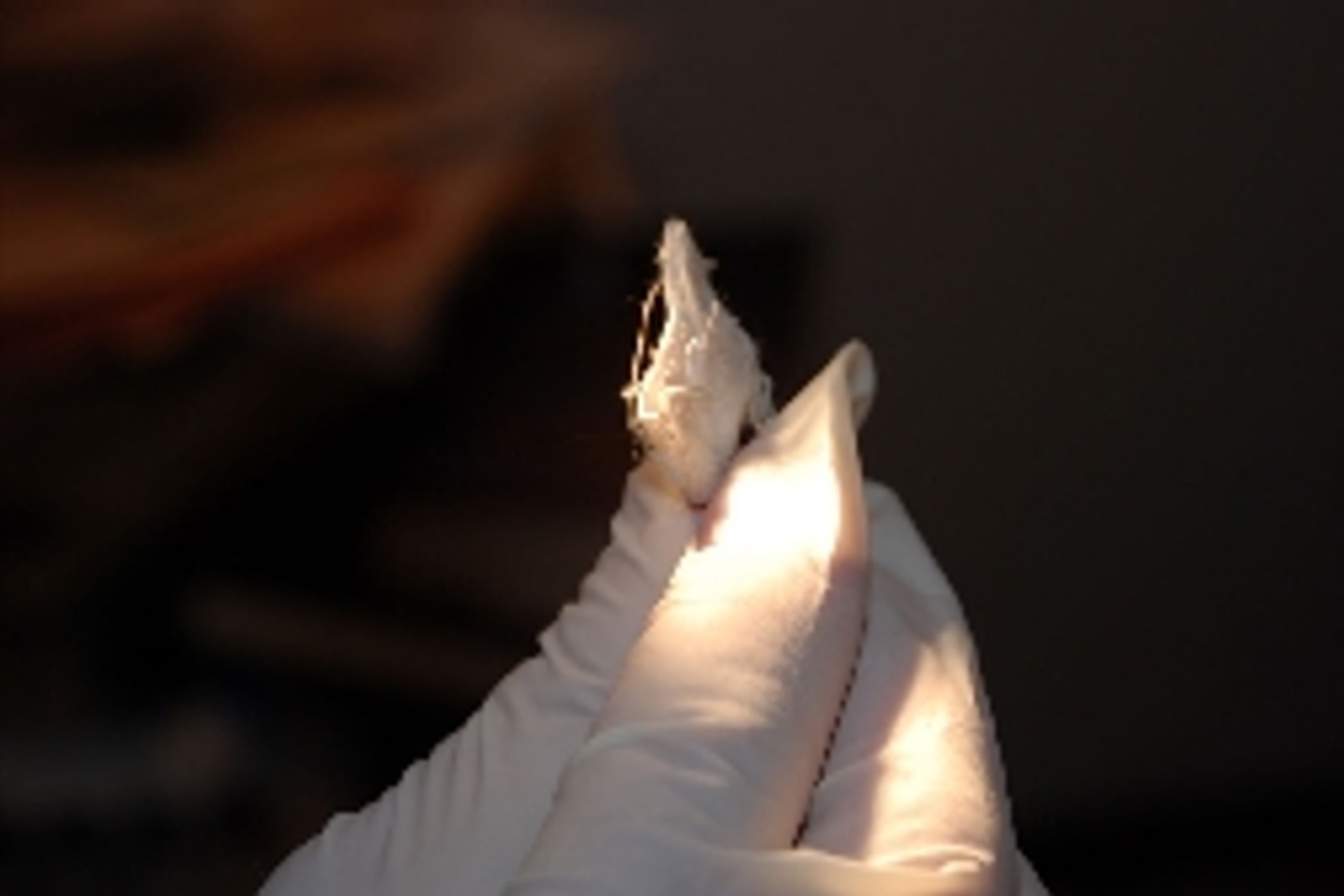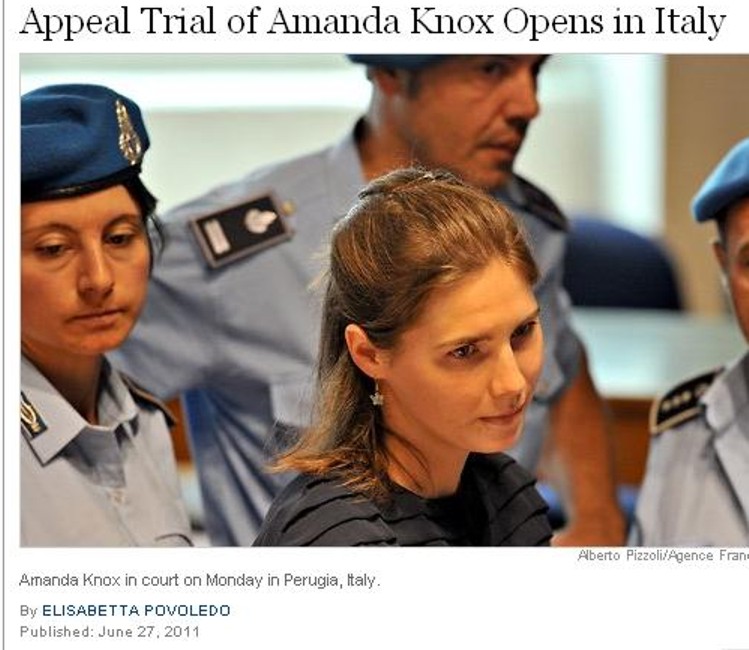
Headsup: Disney's Hulu - mafia tool?! First warning already sent to the Knox series production team about the hoaxes and mafia connections. The Daily Beast's badly duped Grace Harrington calls it "the true story of Knox’s wrongful conviction of the murder of her roommate". Harrington should google "rocco sollecito" for why Italians hesitate to talk freely.
Tuesday, July 19, 2011
What Might Come Up In The Final Days Of The Current Appeal
Posted by Our Main Posters
There have been nine appeal hearings since last November and there might be a further half a dozen.
Court will meet on July 25 and 31 and August 1. Then will come the August break, and then further hearings and an appeal verdict. At the last hearing on 27 June, Judge Hellman assigned the next three court dates for the DNA report and its rebuttal.
The only other sure thing accepted for discussion is the prosecution’s intention to revisit the mitigating circumstances Massei allowed and argue that they should be disallowed and the sentences of RS and AK increased.
The judges and jury have available to them not only the Massei and Micheli reports but all of the 10,000 plus pages of evidence from both trials plus all the court transcripts.
Our main posters James Raper, a lawyer, and Kermit will be posting a Powerpoint presentation after the DNA court sessions which will explain all of the tough questions that are still lurking in plain sight.
If the appeal court is to overturn the original verdict Judge Hellman would have to convince the Supreme Court of Cassation that Massei, Micheli, Guede’s first appeal judge and the Supreme Court itself that they all got it wrong and that the evidence suggests there was either only one perpetrator or another two.
But the existing evidence including the mixed blood, the mismatched alibis, and the strange pattern of phone calls does not fit either scenario.
Each of the discussion items in the appeal so far seem to have been quasi-disappointments for the defenses, and Giulia Bongiorno seemed to signal that at the June 27 hearing when her frustration over the failure of either Alessi or Aviello to convince became obvious.
Guede on the stand saying that Sollecito and Knox murdered Meredith had to have been a hard blow, and there would be no reason obvious to the court why he would lie.
Our Italian lawyers think the defense on appeal has been misconceived and too hard-line, too zero-sum-game, not very smart. In the appeal hearings Knox and Sollecito have not had the opportunity to exercise either any innocent charm or any show of repentance, and Knox’s statement on 11 December blaming a whole lot of others could have seemed to the jury rather unpleasant.
Our lawyers don’t see an acquittal in the cards barring some huge surprise, such as Sollecito or Knox getting up on the witness stand and surviving withering cross-examination in convincingly putting across one or other of their alibis.
If they don’t get up on the stand, the judges and jury are meant to not make anything of that. But they surely would wonder why.
Monday, July 18, 2011
Respected Journalist Carl Bernstein Criticizes “Murdochism” For Debasing News Reporting
Posted by Peter Quennell
Carl Bernstein was one of the two intrepid Washington Post reporters who helped to bring down President Nixon over the illegalities of Watergate.
He is being seen daily on American TV now and (as above) on British TV decrying the reporting methods and culture which are now being exposed in London, and the manufacture of false news and sensationalism which have left audiences falsely angered and concentrating on all the wrong things.
And which are now resulting in a large popular backlash, and the fleeing of advertisers from the Murdoch newspapers.
On the whole, the UK Murdoch media vehicles reported fairly on Meredith’s case (Sky News, London Times, London Sunday Times, The Sun) but the New York Post stirred things up (see here and here) as did especially Geraldo Rivera on his talk show on Fox TV News.
And the aggressive sensationalist culture did spread far and wide. The much milder competitor to the New York Post, the New York Daily News, has this to say::
The question now is whether the scandal will bring down the most successful propaganda fount in the world, Fox News, or if it will simply continue to sell factoids as “fair and balanced” fact.
This is much more serious than merely hurling mud at a target who has long helped Republicans by slinging loads of mud. The basic problem is, as Carl Bernstein points out in Newsweek, Murdoch became terribly influential with a simple way of doing things:
Just reduce every issue to a child’s level of perception with sensational headlines leading only to black and white, bad and good. In the practices of his mammoth News Corp., Murdoch always sent ethics and fact flying out the window in favor of profits. .
The New York Times has posted a good history of how and why Rupert Murdoch evolved his media culture in Troubles That Money Can’t Dispel here.
As of today, it looks like Rupert Murdoch and possibly his two sons and daughter may all have to stand down in face of anger from News Corps’ nine independent directors on its board of sixteen. News Corps stock value has been hemorrhaging half a billion a day for two weeks.
The directors may also pull the plug on more newspapers and maybe make News Corp exclusively an entertainment company - and get out of faux news.
Sunday, July 17, 2011
Repeat Of The Powerpoint Guides To The Relevant Locations And Events On Meredith’s Fatal Night
Posted by Kermit
Click on the two images below for the two Powerpoints which will take a few seconds to load.
First posted late in 2008. We re-post them now in response to questions we’ve received from the many new arrivals to Meredith’s cause.
Wednesday, July 13, 2011
Analysis Suggests The Conti-Vecchiotti DNA Review Is Weak, Tendentious, Cites Non-Existent Standards
Posted by Fly By Night
Background
In light of the huge fanfare two weeks ago over the release of the court-ordered independent expert review by Carla Vecchioti and Stefano Conti (image above, more in post below) on the forensic science methods and findings of Dr. Patrizia Stefanoni as part of the Knox/Sollecito appeal, we start this analysis of that report by summarizing a few hard facts:
- The DNA samples currently under review by the court are NOT the only DNA samples used to convict Amanda Knox and Raffaele Sollecito. In fact, the five mixed samples (not just DNA ““ there was the fresh blood of both women in four of them) of Amanda Knox and Meredith Kercher constitute the strongest, most damning physical evidence of the case. This is why they have not been subjected to independent review during the appeal, along with the great majority of the evidence Judge Massei and the jury considered in convicting Knox and Sollecito of the murder of Meredith Kercher.
- In reviewing the findings of Dr. Stefanoni, Technical Director/Principal Biologist with the Polizia Scientifica in Rome (image below), the expert report is also critiquing the findings and opinions of an entire well-regarded forensics agency along with the personal views of many prominent forensics experts. They include Dr. Renato Biondo, Professor Francesca Torricelli, and the nationally prominent General Luciano Garofano who in support of Dr. Stefanoni’s own open descriptions have provided lengthy statements describing in great detail their reasons for agreeing with Stefanoni’s methods and findings.
- The use and acceptance of LCN DNA analysis techniques in the USA lags behind that of other countries in the world, as documented in the numerous publications on the topic now seen in US professional journals. Enhanced typing methods for LCN DNA are routinely relied upon in forensic DNA laboratories across Europe to provide sound evidence for courtroom arguments. So the expert report’s overbearing reliance upon AMERICAN sources including the controversial opinions of Bruce Budowle (image below) of the University of North Texas, in questioning Stefanoni’s LCN DNA testing techniques, is highly questionable. Budowle has been strongly criticized by a number of distinguished researchers including Theresa Caragine and John Buckleton for his non-scientific opinions and for allegedly engaging in unethical practices and maintaining serious conflicts of interest.
- Claudio Pratillo Hellman, the judge presiding over the Knox and Sollecito appeal trial, appointed Vecchioti and Conti to provide an independent assessment for the court regarding the handling and analysis of several pieces of evidence that played a role in the conviction of Knox and Sollecito. Using the expert report as a focus, on Monday July 25th these independent experts will appear in court along with various expert witnesses for the prosecution, the defense teams, and the Kercher family to discuss the only pieces of DNA-related evidence that have been subjected to review in the appeal trial. They are (1) the DNA on the kitchen knife accepted by the Massei court to be the murder weapon, and (2) the DNA on a bra clasp torn from Meredith’s body.
The findings of the expert report itself in all their 145 pages of depth appear to boil down to two primary debates: (1) Issues surrounding the Low Copy Number (LCN) DNA analysis techniques employed by Dr. Stefanoni, and (2) Issues surrounding the probability of excluding all possible sources of contamination from the evidence.
The Expert Report
When the supposed findings of the independent expert report were first leaked, international media ballyhooed them as a sure sign that Amanda Knox and Raffaele Sollecito would soon be cleared of murder charges, claiming that the prosecution’s DNA arguments had now been shown to be based upon substandard DNA testing practices, and that the evidence might have been contaminated. Knox herself was said to have sung and danced with joy upon hearing the news.
But a closer look at actual contents of the report, and its supporting documents, suggests that such celebrations are premature and ill-advised. The expert report exists to serve only as the focal point for upcoming courtroom arguments, including arguments over the validity of Dr. Stefanoni’s claim to have identified Meredith Kercher’s DNA on the blade of the kitchen knife. The report explains why a complete repeat of the testing Stefanoni performed on both the knife and bra clasp was not possible and how DNA on the bra clasp had deteriorated beyond testability.
The expert’s attempts to perform repeat tests on the knife were unsuccessful in identifying cellular material on the blade. This was not a surprise, considering that Stefanoni had previously reported that additional testing would be impossible due to the minimal amount of DNA originally found there. The expert’s testing did, however, firmly conclude that Amanda Knox’s DNA was located on the handle of the knife.
The expert report will steer upcoming courtroom debates towards a complete review of Stefanoni’s crime scene management practices, the DNA analysis methods she employed, and the reasoning and protocols she used to reach her conclusions. The expert report provides one of several frames of reference for these debates and in part focuses upon criticisms not only of Stefanoni’s use of LCN DNA testing techniques to identify Kercher’s DNA on the knife blade but the entire LCN DNA analysis methodology itself. As noted above, Vecchioti and Conti confirmed the presence of Amanda Knox’s DNA on the handle of the knife but suggest that the very small sample of Meredith’s DNA located on the blade, identified by LCN DNA testing, is the result of contamination.
The Potential For Contamination
Contamination of evidence might occur in the evidence collection phase of an investigation, or it might occur as the result of improper laboratory testing procedures once a sample has arrived securely at the forensic laboratory. Before digging deeper into laboratory contamination potential, including associated LCN DNA analysis issues, we first take a look at the expert report’s evaluation of evidence collection protocols and the potential for contamination in that phase of the criminal investigation.
The expert report attempts to establish that international standards for crime scene management practices exist. However, their approach raises the same question raised by the assignment of Bruce Budowle, a controversial and opinionated LCN DNA commenter, as the foundation for their DNA analysis critiques. Namely, why does the expert report find it necessary to over-rely upon inappropriate and highly questionable American resources to support its most critical arguments?
As strange as it may seem, the Italian expert report references quite a few relatively obscure, and often outdated, editions of American resources. They include the State of Wisconsin Crime Laboratory Manual, the Missouri State Highway Patrol Handbook, the North Carolina State Bureau of Investigation Evidence Guide, the Louisiana State Police Crime Laboratory Manual, the New Jersey State Police Evidence Manual, and even introductory college textbooks covering criminal investigations at the level of “please wash your hands.”
If the intent of the expert report was to establish that a standard set of international protocols exists, and then to compare that set of protocols to protocols used in the Meredith Kercher murder case, then why not cite the international body that establishes and upholds such standards, if that body actually exists?
Instead, the approach taken by the expert report only serves to underscore the notion that there may, in fact, be no such thing as international standards for evidence collection and handling. What the report actually establishes is that they are citing from a selected list of extremely diverse regional “best practices” manuals in support of theoretical and abstract concepts or points. In doing so the expert report authors its own set of ad hoc “international standards” as it moves along.
It would have been far more effective to put the focus on creating an objective and fair analysis of the real-world crime scene management procedures employed in this case, and then comparing and contrasting those findings with the successful, or unsuccessful, management practices of other similar case-study investigations providing appropriate citations from relevant literature along the way.
As a result of the independent experts’ approach, the contamination risk concerns cited in the expert report during the evidence collection phase appear to be largely a rehash of arguments over protocol that were thoroughly vetted during the course of the trial itself, such as how often investigators changed their gloves.
What we are left with is a report that only theoretically suggests that contamination cannot be ruled out, while completely failing to provide concrete examples of precisely when and how contamination could have entered into the evidence management chain. For the appeal, this will result in a repeat of the same attacks upon investigative methods and processes, and all of the related arguments, that the court entertained during the trial, albeit this time with a new judge and jury.
The expert report apparently confirms that Raffaele Sollecito’s DNA was found on the bra clasp in an amount that would be difficult to attribute to contamination. Dr. Stefanoni found about 4 nanograms of Sollecito’s DNA on the bra clasp, which is a substantial amount of DNA considering that research suggests that contaminated samples usually contain sub-picogram amounts of DNA, or around 1000 to 10,000 times less DNA than attributed to Sollecito on the bra clasp.
That fact that Raffaele’s DNA on the clasp appears to be mixed with additional DNA should NOT lead to conclusions that his profile cannot be effectively isolated and identified, or must be the result of contamination. In fact, Italy’s premiere forensic science expert Luciano Garofano testified that Stefanoni’s analysis of the bra clasp was “perfect.” It is also not plausible to suggest that contamination is the source for Sollecito’s abundant DNA on the bra clasp in the absence of significant environmental traces for Sollecito anywhere else in or around Meredith’s home, or in the Rome laboratory for that matter.
LCN DNA Testing
LCN is a DNA profiling technique employed when available DNA is limited to very small quantities. A DNA sample might be as small as a millionth the size of a grain of salt, amounting to only a few cells of skin or sweat left in a fingerprint.
Using LCN testing techniques the small sample can be successfully evaluated and attributed to an individual. LCN DNA testing has been in use since 1999 and is rapidly gaining worldwide acceptance in both legal and forensic science communities. For example it has now been used in more than 21,000 cases in the UK since being approved for use in criminal cases in 2008, following a period of stringent testing and evaluation.
The increased sensitivity of LCN testing techniques does increase the potential of contamination to impact analyses of small DNA samples in the laboratory. Since LCN techniques can accurately amplify DNA samples having as little as just a few cells it has been suggested that even breathing on such a small sample has the potential to render the resulting profile useless. Contamination is particularly problematic for LCN samples because both sample and contaminant DNA are amplified, resulting in a complex mixed profile with related stochastic effect impacts.
But, as evidenced in the expert report itself, Dr. Stefanoni is well-versed in the appropriate methods for dealing with these concerns, since she is quoted as already having admonished the court experts Vecchioti and Conti for not making use of a fume hood to ensure the absence of contamination as they conducted their retests on the evidence.
In recent years numerous professional publications have addressed the scientific, technical, and legal issues surrounding LCN DNA sample testing, outlining the stochastic effects and artifacts such as peak imbalances between alleles and loci, as well as allele and locus drop-out, or allele drop-in, along with making a variety of suggestions for both avoiding contamination and making error-free evaluations of stochastic effects.
On the basis of these publications, including the proceedings of the biannual world congresses of the International Society of Forensic Genetics, it is clear that enhanced typing methods for LCN DNA are now routinely in use in forensic DNA laboratories across Europe. This is strong evidence that the scientific community is now actively engaged in an effort to document all LCN DNA methods in use and is working towards developing standard biostatistical tools for evaluating LCN DNA typing results.
It also appears as though the USA is lagging behind other regions in research, practice, and acceptance in this discipline.
In this relatively new field of study it is not surprising that researchers have yet to establish anything approaching standards for LCN DNA testing and analysis. Even so, this has not prevented the results of LCN DNA testing from being successfully and routinely introduced as viable evidence in courtroom arguments.
For example, on February 8, 2010, Judge Robert Hanophy of the Supreme Court of Queens County, New York ruled that results of LCN DNA testing, as performed by the Office of Chief Medical Examiner in New York City, is now generally accepted as reliable in the forensic scientific community, it consistently yields reliable results, it is not a novel scientific procedure, and it is therefore admissible at trial (People v. Megnath, Supreme Court of New York, Queens County, 2010 NY).
Although the current Wikipedia article on the topic maintains that LCN DNA has only been adopted for evidential purposes in the UK, the Netherlands, and New Zealand, this unreferenced claim stands in ignorance of the fact that inquisitorial court systems in numerous European countries do not typically require formal publication and peer review of analytical methods in scientific journals as a justification for their methods.
And as we have seen in the current Knox/Sollecito trial, in Europe it has become customary to have independent experts attempt to convince the court of the validity, or invalidity, of the LCN typing results that have been presented in a trial. To be successful, it is essential that an independent expert provide the court with evidence of expertly-conducted retests of available evidence, relevant citations of appropriate research, and meaningful evaluations of protocols employed in outlining their objective and balanced set of opinions for the court.
In this regard, it appears that the independent expert report for the Knox/Sollecito appeal has completely missed the mark.
Their report gives the strong impression that Carla Vecchioti and Stefano Conti were overtly attempting to invalidate the findings of Dr. Patrizia Stefanoni, the Polizia Scientifica in Rome, and the wealth of supportive testimony provided in court during the trial. The tone of their report strongly indicates that they have lined up with Sollecito defense experts Adriano Tagliabracci and Valerio Onofri of the Institute for Forensic Medicine in Ancona, and Knox defense experts Sara Gino, Walter Patumi and Carlo Torre from the University of Turin.
We will see in court on the 25th if they are really across the figurative aisle from the prosecution witnesses Dr. Stefanoni and Dr. Giuseppe Novelli, a highly esteemed professor of biomedicine at Tor Vergata in Rome who is considered to be the “father of police forensics” in Italy, along with the expert witnesses for the Kercher family Professor Torricelli, and Dr. Emiliano Giardina, who is a colleague of Professor Novelli at Tor Vergata University.
This appears to establish grounds for a formidable courtroom battle if all experts can provide solid grounds for their opinions. However, the Kercher’s lawyer Francesco Maresca was already quick to point out that those on the prosecution’s side of the aisle have substantially more practical experience and years of work in the forensic science field.
An in depth reading of the expert report uncovers allegations that Dr. Stefanoni has not followed internationally established forensic science management standards and that in doing so she has committed analytical errors, such as the misattribution of peaks in her bra clasp DNA analysis. What the report fails to mention, however, is that no such standards exist and that there are currently multiple perspectives from which a scientist might argue their case regarding the proper interpretation of DNA data, as evidenced in any sampling of current forensic science journal articles.
For example, the expert report cites a 2006 International Society for Forensic Genetics (ISFG) publication as an example of a standard for determining which stutters should be considered as alleles in the assessment of mixed DNA samples. But this alleged “standard” stands in contrast to direct testimony from Dr. Stefanoni while defending her lab protocols in comparison to the ISFG “recommendations” which she claims in no way qualify as authoritative standards. The difference between recommendations and standards is a critical distinction in scientific fields.
A closer look at this discrepancy reveals that in 2007 Dr. Stefanoni and her immediate supervisor, Dr. Renato Biondo, hosted a meeting in Rome of the European DNA Profiling Group (EDNAP) in which these same 2006 ISFG recommendations were discussed. At that meeting papers were presented from the UK and Germany that contested a number of the ISFG recommendations that the expert report now attempts to establish as mandatory standards.
In the midst of this ongoing debate over ISFG recommendations, it is quite remarkable that the expert report, citing that 2006 ISFG document, chooses to assert that Stefanoni made erroneous interpretations of chart peaks simply because her interpretation of the data did not respect the controversial ISFG recommendations.
The experts report consequently admits that they confirmed Stefanoni’s awareness of the ISFG recommendations, and that she expressed a personal view that they should simply be viewed as “guidelines.” Yet they STILL insist on continuing to label her conclusions as erroneous since she did not “correctly” and “explicitly” adhere to the ISFG “recommendations.”
In light of all this, it is highly unlikely that Judge Hellman will dismiss Dr. Stefanoni’s knowledge and expertise on this matter as readily as Vecchioti and Conti have in their expert report.
An in depth analysis of the expert report also indicates that the citations from scientific journals are incomplete and often “cherry-picked” to directly support specific criticisms brought against Dr. Stefanoni’s methods.
For example, the expert report appears to base its entire argument against Stefanoni’s reliance upon LCN DNA analysis techniques upon one paper, authored by Bruce Budowle et al entitled “Low Copy Number Typing Has Yet to Achieve General Acceptance.” The expert report then goes on to cite a paper by Gill and Buckleton where these authors appear to support a few claims made by Budowle (image above) in his article, but the report completely ignores the fact that Gill and Buckleton then go on to air strong criticisms of many other claims made by Budowle.
In fact, in 2010 John Buckleton and Peter Gill authored a scathing criticism of Bruce Budowle’s entire “Low Copy Number Typing Has Yet to Achieve General Acceptance” article; the very article that the expert report relies exclusively upon in bringing Dr. Stefanoni’s methods into question. In their article, published in Forensic Science, Buckleton and Gill state:
[Budowle’s] article is not peer reviewed. The proceedings of the ISFG Congress are prefaced by the message: “the manuscripts were neither reviewed nor edited in detail. The articles reflect the opinions of the authors.”
It contains neither new data nor any novel scientific findings. Rather it represents public advocacy and is an expression of alternative opinion by the three authors concerning observations that are largely common ground. There is a place in the scientific literature for advocacy but it must be soundly based on proven facts.
We have some considerable difficulty in actually determining just exactly what the authors are indeed advocating. This is because of their inconsistent use of terminology and inconsistent recommendations. In our opinion, the views presented are inadequately precise, demonstrate a lack of appreciation of underlying principles and are not aligned with broader scientific opinion.
The title of the paper appeared to have one eye on future Frye or Daubert hearings and again we question whether such a title has a place in the learned literature. It takes upon itself, inappropriately, the role of gatekeeper of what constitutes “general acceptance” (The Frye test).
The article itself appears to be a rather inappropriate continuation of a debate arising from a court case in New York (People v. Megnath). Again we would question whether this journal is the correct forum to air this debate.
In other words, Buckleton and Gill are suggesting that Bruce Budowle acted unethically by publishing his non-peer reviewed opinions in a professional journal for the purpose of using the article to support his work as a paid consultant, and as an expert witness in court cases such as People v. Megnath in New York.
Incidentally, Budowle was unsuccessful in advocating his opinions as an expert witness for the defense in People v. Megnath in his battle with Theresa Caragine of the Office of the Chief Medical Examiner of the City of New York over her submission in court of data obtained using LCN DNA testing techniques.
Theresa Caragine herself authored a powerful rebuttal of Budowle’s article claiming that when Budowle’s “opinions” were published he failed to disclose that he had, in fact, been retained by the defense counsel for Mr. Megnath, and that he had already testified as a paid expert witness regarding the opinions he expresses in the journal article that the expert report relies heavily upon in attempting to substantiate its points. And even though Bruce Budowle’s opinions had previously been delivered as a paid expert witness in a judicial setting, he made the claim of “˜No Conflict of Interest’ when applying to publish this non-peer reviewed article.
Caragine’s remarks go even further in criticizing the Budowle et al LCN DNA article by pointing out that it is not even a research article, but a non-peer reviewed submission that had purportedly been presented in the context of the 23rd Biennial Worldwide Conference of the International Society of Forensic Genetics, 2009 in Buenos Aires.
Caragine claims that, while Budowle had in fact submitted a similar paper at that meeting, it was not under its current title, nor did it have the same the list of authors, and the abstract submitted to the conference organizers for their selection process does not align with the content of the paper now cited in the Italian experts’ report submitted to the court in the Knox/Sollecito appeal. In her rebuttal, Caragine strongly questions whether or not such a circumvention of all standard principles of scientific publishing is in any way acceptable or appropriate.
Conclusions
In light of all of the above, the upcoming July 25th court hearing in the Knox/Sollecito trial should be considered as anything but a foregone conclusion. The rationale behind the exuberant remarks noted in recent press releases regarding content allegedly favorable to defense efforts and anticipated impacts appears to be baseless.
For an Italian report, it gives the appearance of being remarkably Amero-centric, and we find it ugly and unprofessional that the expert report chooses to attack Dr. Stefanoni and her colleagues by citing nonexistent international standards and by relying upon extraordinarily questionable resources in doing so.
The report’s final conclusion that contamination cannot be completely ruled out is remarkably weak considering that there are relatively few real-world cases in which contamination of evidence might be completely ruled out.
It becomes clear, then, that well informed prosecution interrogators will have no problem in identifying and attacking the report’s multiple weaknesses. We should expect Dr. Stefanoni and the prosecution’s team of experts to present precise counter arguments for the challenges expressed in the expert report, strongly defending the forensic science capabilities of Stefanoni and her team.
Carla Vecchioti and Stefano Conti In Perugia Seen Enjoying Their 15 Minutes Of Fame
Posted by Peter Quennell
Wednesday, July 06, 2011
Thinking About Rudy Guede, Raffaele Sollecito, and Amanda Knox: What Might Have Been
Posted by Ergon
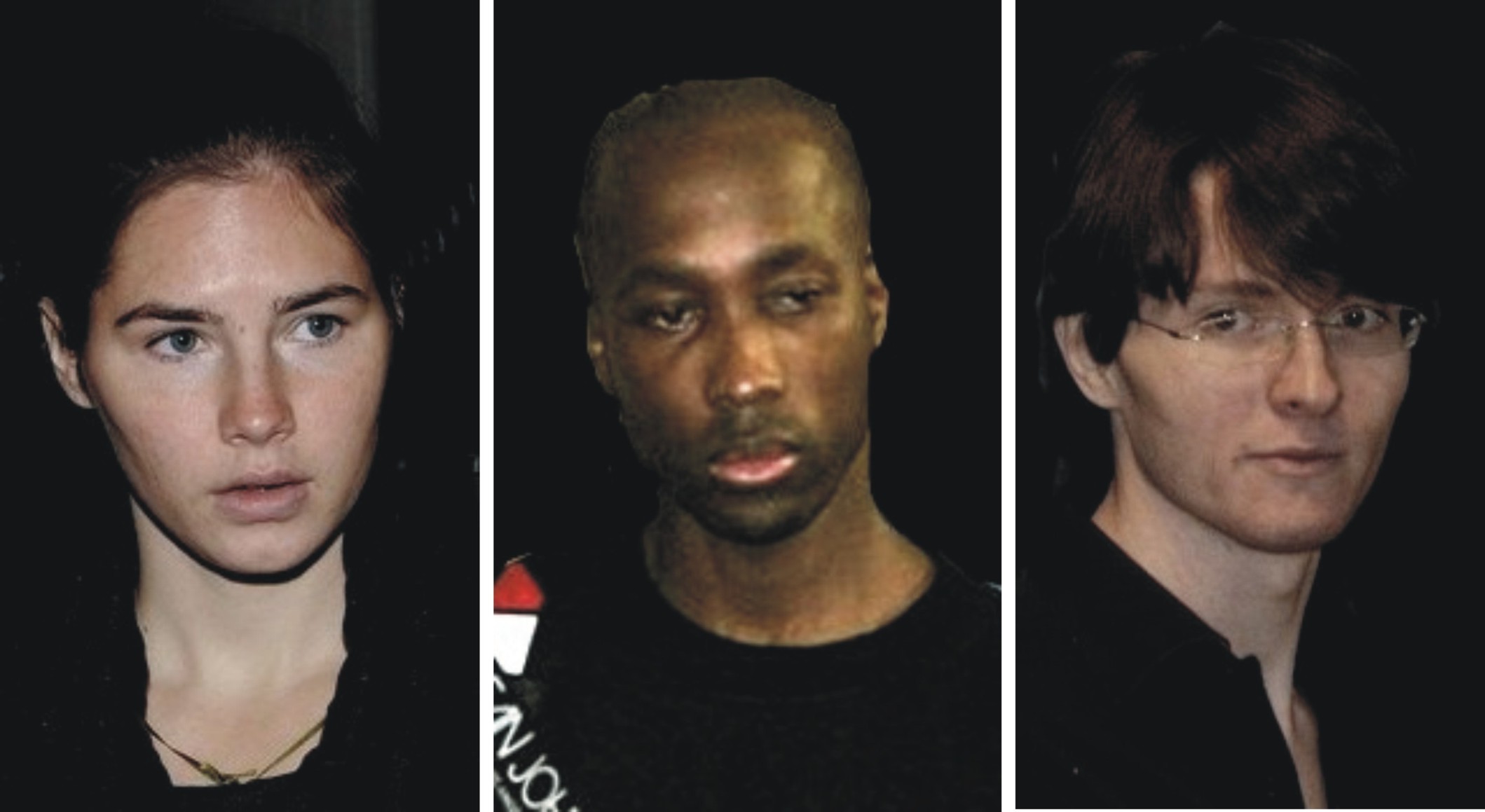
This is my post on my website Man From Atlan of June 26, 2011 cross-posted here at the invitation of TJMK.
Due to my Scorpionic nature, I think, I come across a great many criminal and legal cases that grab the public attention.
It seems, also, that I get involved in the case in one way or the other, and, a great number of coincidences seem to er, follow me. Psychologists call that the ‘I was there syndrome’ and that’s fine, it’s a form of mental illness, and you can decide if I have it, or not!
But I have spent a lifetime studying the fine line between Psychic Sensitivity and Schizophrenia, and what interests me here is not only how we identify with the crime and the individuals involved, but how these cases establish themselves in the public consciousness.
And yes, I want to write about the lives wasted, and what might have been.
Whenever a person dies, there is a break in the fabric of consciousness, and all of humanity is affected. Most people learn to ignore it; some, more sensitive, get consumed by it, but we are all affected by it at some level.
A murder case may be just one individual; the devastation of an earthquake or tsunami may affect hundreds of thousands. As for me, I am an observer, but also in a way, a catalyst.
Look, you know my spiritual claims. Forget that for a moment. What I do is warn people about the fateful consequences of the psychic and spiritual damage done to our souls (or psyche) and environment, and if you don’t listen, if you don’t change, then so be it. What will be, will be. But a part of me, having seen what would happen, mourns for what might have been.
One of my patients was a girl who had Rhett’s Syndrome, a severe form of Autism. She came to my clinic and the treatments really helped, yet it was the mother who also needed help. In the end, suffering from depression, she killed her child and tried to commit suicide.
A woman two streets down from us, suffering from post partum depression, killed her husband and stabbed her two children as well. My son used to play with their dog at the local park, but curiously, I never met them.
I worked on a mayoralty campaign. The candidate, a lovely soul, came second. At the farewell party I saw something dark around him. I told his partner that he needed help, and offered. It wasn’t heard because they were, I think, already caught up in their karma. A year later he jumped off a bridge and killed himself.
Then, going from the personal to the ‘famous’ cases, and the ‘coincidences’ and lessons thereof.
I wrote in “Michael Jackson, the Drowning Man” about how I helped a famous musician with his Parkinson’s Disease in 1994 but when I asked him to introduce me to Michael Jackson, he didn’t. I was too controversial. Pity, I could have helped him before he descended into his inappropriate behavior.
OJ Simpson was the first criminal case. I lived in Santa Monica almost equidistant between him and his ex-wife Nicole Brown. I had driven around the neighborhood enough times to know the story had some inconsistencies, but I believed he was guilty. I also accepted the jury’s verdict of Not Guilty, because the principle of reasonable doubt, in American law, had to be upheld.
There also was the fact I had closed my practice in Toronto and moved to Los Angeles just to help people there, arriving in 1993 in time for the Malibu Fires and Northridge Earthquake (written in “A Spiritual Journey To The United States”) and once I knew my work was done left for Texas. And a few months later, the murder, the White Bronco slowly driving down the freeway, the media circus and all of LA enjoying a mass catharsis.
After I left the US in 1995 I shifted my focus to Europe, though Canada remained my home base. I still looked back to the US with fondness, and sadness for what was yet to come.
I was in England in 2005 when the Terri Schiavo case gripped the nation. She was in a lengthy coma, with most of her brain destroyed. Her parents were fighting to keep her on life support, while her husband wanted to pull the plug and let her die.
I tried to stay uninvolved, even though I knew her spirit wanted to be free. I felt this was wrong, for parents to keep holding on to their child. So one day, when Chloe called me about the latest developments, I said enough was enough, and helped her spirit pass on. She died that evening. And shortly after I left England, there was the London Tube bombing. Coincidence, or catharsis?
Madeleine McCann, a little girl from the U.K., disappeared from her holiday bedroom in Portugal just a few days before her 4th birthday, in May of 2007. Her parents were dining some distance away with their friends and inexplicably had left the children unattended and the door to their villa unlocked. The investigators never found Madeleine. The conclusion, absent a body, was that she had been kidnapped. There were many false sightings after that, as people assumed she had been kidnapped by child traders.
This was two months before I went to the UK with my family on holiday. I was asked what I thought about Madeleine. Would she be found? I replied that she had died that first night, and the parents were involved in a cover up. The person who asked me that question then consulted a psychic, who of course said what everyone wanted to hear: Madeleine was alive.
Then further reports came out, and we found that special police dogs, trained to sniff for evidence of death, had indicated she had died inside the bedroom that very night. Nothing further came to light, as political interference corrupted the whole process, and police investigators were sacked for ‘unfairly blaming the parents’
Yet, there’s a website that does just that; you be the judge. See here and here and here.
This was another example of a case that would consume the public, as so many identified with the missing child, or the parents. And, as always, my presence seemed coincidental to a whole series of events. A few weeks before we arrived in Glasgow, bombers hit Glasgow airport with a van loaded to the top with propane cylinders, the rains hit the whole country for three months straight, and the biggest floods in over a century inundated large parts of Southern England. Yet wherever we went, there was sunshine…This is the dichotomy of healing, that there can be sunshine, but also, darkness.
I had already arranged to go back to the UK for a month as a consultant. I returned to Canada on October 31.
The very next day, on November 1, 2007, British student Meredith Susanna Cara Kercher, was murdered in Perugia, Italy. Her roommate, Amanda Marie Knox, was convicted of the murder, as was her boyfriend, Raffaele Sollecito, and Rudy Hermann Guede, a drifter from the Cote de Ivoire in Africa.
I hadn’t read much about the case and trial, but came across it on the pages of Huffington Post, the social news website. Here was a full blown narrative: Amanda Knox was innocent of the crime, she was the victim of a corrupt Italian prosecutor, and Rudy Guede was the sole perpetrator (All untrue, btw)
What piqued me was the fingerprints of an extensive PR campaign to manipulate public opinion so as to influence the outcome of a trial in another country. Appearances by Knox’s family on Oprah, calls to boycott Italy, politicians trying to intervene in a judicial process, oh my.
And the comments on the numerous Amanda threads were funny, and so sad. These people were, in a word, disturbed. They were even foul mouthed about the victims parents, for daring to say they felt justice had been served. And they had no compunction about blatant lying and slander either.
I’d seen this so many times, the ease with which people could be led to believe, on the basis of something they saw or read, the most outlandish things.
Now I really do believe that trying to convince True Believers is a waste of time. (But arguing with them can be er, illuminating:) I’m interested in the process by which they come to that belief, but any good book on mob psychology can give you the basics, and of course, you must always read Orwell’s 1984. The same principles of propaganda used to create support for war can also be used to support a position, no matter how wrong it might seem to the intelligent observer.
So I looked at the facts of the case. Amanda Knox had falsely accused her black boss, Patrick Lumumba of the crime, she and her boyfriend had provided alibis that were later disproved, there was a staged break in to mislead the investigation, and there was sufficient DNA, blood and foot prints to prove the complicity of the other two accused.
Two courts, led by Judges Micheli and Massei, had already looked at over 10,000 pages of evidence to conclude that Amanda Knox and Raffaele Sollecito had also been involved in the murder. And, the most compelling DNA evidence, Raffaele’s DNA on the victims bra, and Amanda’s DNA mixed with Meredith’s on the murder knife found in Raffaele’s flat.
The Supreme Court of Italy, while affirming Rudy Guede’s conviction, had already established that more than one attacker had been involved, and that DNA attributed to Knox and Sollecito had already been found.
I also noted that the Wikipedia page on Meredith Kercher, once reflecting the findings of guilt against all three accused, had now been hijacked by, let’s say, Amanda Knox partisans.
I have to thank the two websites TJMK and PMF for the fine work they have done compiling and translating the vast volume of Italian language transcripts of the trial and summaries of evidence. Without them, my technical knowledge of the case would have been quite inadequate. I can’t recommend them highly enough for anyone interested in learning about the case.
But I formed my opinions way before I found their sites, and I say this out of respect: I don’t want their work compromised by association with my own views.
What I write about here is first and always, spiritual in nature. I may use logic to confirm something, I will look at evidence, but ultimately I look at disturbances in the fabric to search out imbalance and untruth. And I learn to trust my instincts. It is only afterwards that I look at other factors, and if I need to adjust my views, so be it. But the patterns and the coincidences, are fascinating.
First, the Astrology. Meredith Kercher, born Dec. 28, 1985, and Rudy Guede, December 26, 1986, are both Capricorns. Raffaele Sollecito, March 26, 1984, is Aries, and Amanda Knox, July 09, 1987, a Cancer. Their signs form a T-Square, at 90 degrees to each other, which are widely seen as indicators of stress and incompatibility. The day of the murder saw widespread stressors on all their horoscopes which would lead to murder, detection, conviction and imprisonment. The Astrology even shows Raffaele’s drug dependency and mental confusion on the night of the murder, the conflict between Amanda and Meredith, and the violence and rage that simmered just below the surface of Amanda Knox’s psyche.
And the night of the murder, November 1, 2007, saw Saturn and Venus in the house of emotional excess, Uranus in the house of sudden death, and Jupiter/Pluto, in the sexual house, in an almost exact T-Square to each other. The close conjunction of Pluto to the Milky Way’s Galactic Center shows the potency of this murder in attracting the public imagination, and also, the trigger for the murder.
But Astrology is just one of many tools in Humanistic psychology. It shows patterns, yes, but mainly it gives a picture of motivations and stages of development. And sometimes, it tells us what might happen. For me, there are many tools: Psychism to know, and other tools to understand.
So I will say this about all four:
Amanda Knox’s profile is that of the self destructive individual who will fall from ‘the shattered tower’ due to her associations with others. Btw, her July 09 birthday is the same as OJ Simpson’s and they Both Wielded Knives, hmmm!
Raffaele Sollecito has powerful friends who won’t be able to help him. He almost had it too easy, and his drug use took him into some deep dark spaces. Note he wasn’t just using cannabis, but more likely a potent form called skunk weed, plus heroin and cocaine.
Rudy Guede may actually turn out to be a sympathetic individual. His is the one chart I see that leads to redemption and indescribable potential. He is, quite frankly, the most believable of the three, even though he did lie, and he was rightly found guilty.
Meredith Susanna Cara Kercher was greatly loved, had the intellectual capability to go far, and would have, if she hadn’t been murdered, been a bright blazing star. RIP Meredith.
I hate to make predictions. Human beings will always have the capacity to alter the future (though truth be told, not as much as they like to think) My prophecies have to do with the future of this planet and humanity’s ability to survive and regenerate itself.
But on June 27, Rudy Guede will face Amanda Knox and Raffaele Sollecito in their appeals trial, and for the first time, be forced to answer questions directly. I believe this will be the day he begins to redeem himself.
(Update: And on that day, he placed Amanda Knox and Raffaele Sollecito at the crime scene)
On June 30th, the DNA experts will present their findings. This will be one day before the solar eclipse in Cancer. I predict bombshells in court.
(Update: the expert’s report was presented a day earlier, on June 29, and it was interesting, to say the least. It disputed some of the DNA findings accepted by the previous court and one would think from the media reporting they prove Knox and Sollecito’s innocence. From my reading of the report, it does no such thing, only places ambiguities on some of the evidence. There definitely will be fireworks in court, as the prosecution tears into the many errors of the report)
I am struck by the coincidences of the cases I outlined: allegations of prosecutorial and judicial misconduct, disputed forensic and DNA evidence, racism and political interference, your standard trial. But they all, held a special place in the public imagination.
But in spiritism we see that it is the unquiet spirit of the victim that calls to us, and we can only hope and pray for their peace. Justice is always done.
And one can only look back at them with sadness, for what might have been.
Friday, July 01, 2011
Now France Is Ticked At The American Main Media For Mindless Assumptions About Another Case
Posted by Peter Quennell
Above is the former French head of the IMF Dominique Strauss-Kahn with US Treasury Secretary Ben Bernanke.
The New York police were indeed hard on Mr Strauss-Kahn when an African maid in a hotel who is here on a work viza accused him of rape. He was paraded before the camera several times in handcuffs, and he spent time in New York city’s tough prison on Rikers Island.
But he did get to be released on bail, and the cautious police investigators did continue to dig.
Now they have announced that the maid in question is engaged to a major drug dealer, that huge sums have passed through her bank account, that she called someone several nights later to ask them how to play her claim for maximum gain, and that she lied repeatedly in her testimony to police.
Mr Strauss-Kahn is already having his bail conditions reduced to near-zero, and he is likely to be a free man later this month, and presumably then back in France as a popular hero.
Statements throughout by the New York police on the hard facts were in fact always fairly cautious but the media here really had a field day.
They ran new reports almost daily on what a monster this foreigner Mr Strauss-Kahn really is. A lot of the reporting seemed prissy and prudish, even by American media standards, but damage was indeed done. Mr Strauss-Kahn’s American and IMF friends backed off, and were refusing to be quoted in his support.
Though the US main media all knew who the accuser was they did not dig into her very questionable background at all. The police alone did all of that and the “responsible media” including the New York Times none at all.
No wonder that today the French sound ticked.
[Below: an ABC News report six weeks ago]
Thursday, June 30, 2011
DNA Report Already Dead On Arrival? Francesco Maresca Etc Don’t Think It Is Very Good
Posted by Peter Quennell
The New York Times redeems itself a little with an okay story on the report. It includes this:
The lawyer for the Kercher family, Francesco Maresca, countered that the word of the independent experts would not be the last word, and said he would raise his objections during the last week in July, when the report will be formally discussed during a week of hearings.
He said that the scientific police and the consultants who carried out the original tests had far more experience than the independent experts appointed by the court.
“I was surprised that these experts were so certain, and gave such strong, drastic opinions, given that they don’t have the same number of years of experience under their belt,” Mr. Maresca said.
Our Main Poster lawyer Tom M emailed this.
Maresca makes sense. The referral was not for the purpose of making a legal judgment about the two pieces of evidence, but to report on the techniques employed and the procedures followed. At the end of the first trial there were X number of DNA expert witness reports; now there are X+1 expert reports and this latest one only muddies the water.
It does not make the judges’ task easier as far as these two items are concerned. Unless there is something in their analysis that is considerably more persuasive than what the previous defense experts said, AK and RS really haven’t advanced the ball, it’s just that now they have, I don’t know, say 3 expert reports instead of 2 that criticize the LCN and say it could be contamination.
One thing that needs to be looked at is whether legal standards and scientific standards are at odds. Italian law places the burden of proof on the party that asserts something. “Can’t rule out contamination” may be a true scientific statement, but does it supplant legal doctrine? I don’t think so.
Also, while scientific protocol call for repeatability, Italian seems to provide where the amount of material to be tested is so small that only one test can be performed, others are notified and invited to attend to observe and to raise objections. I think the law is within its rights to do this, even though the pure scientist would not.
That of course is what happened. The defense experts were all invited to come witness the one-time-only testing of the knife but failed to show. The knife test would not even be under review if they had showed. No wonder the prosecution sound ticked.
There are also quotes in the New York Times from others who expected more and better than they got.
Other accusers of Ms. Knox and Mr. Sollecito said that the DNA was just one piece of evidence in the case that they built against them, based on various testimonies, their lack of an alibi and what prosecutors say is other damaging physical evidence, which has not been reviewed. During one interrogation, Ms. Knox allowed that she was in the house when Ms. Kercher was murdered, an admission she later retracted, saying she had spoken under duress.
“The first jury decided looking at a wide range of evidence, the DNA was only part of it,” said one prosecutor, who was not authorized to speak publicly about the case. “Everything else still stands.”
And Italian poster Yummi on PMF posted this:
I am reading the report. The report brings in a lot of interesting information about the details of the DNA findings on these two items.
However, I fail to find the conclusions about the bra clasp convincing. In this report, the final issue of contamination is considered in the abstract, as well as criticisms on Stefanoni’s work.
In the abstract means, the conclusion on the probative value is given without an assessment on how likely a contamination might occur on that one specific profile of that contributor, which is Raffaele Sollecito.
The same report infers there was environmental contamination of the bra clasp, on the basis of the presence of a plurality of male contributors (at least two). But fails to give weight to the outstanding difference in the peaks hight/areas (amount of DNA) between these third parties, on one hand, and Sollecito’s DNA on the other: the amount of DNA prsent is very diferent in the two cases.
There is a very big difference in the amount of DNA from these contributors - Sollecito on one side versus others, his contribution really very large compared to others. I don’t know why the report fails to notice this.
The report also criticizes the “interpretation” given by Stefanoni, as said, of the DNA chart on the bra clasp. But, in fact, in the end the report acknowledges that both autosomic and Y haplotype DNA of Sollecito are present on the bra clasp (p.135):
So there is no doubt Sollecito’s DNA was on the bra clasp in large amount.
The same report cites failure of meeting interpretation standards for the bra clasp DNA. But acknowledges that there are no agreed standards for the assessment of stutters and alleles on mixed profile traces.
Wednesday, June 29, 2011
The 140-Page Conti-Vecchiotti Report On The Partial DNA Review Is Released
Posted by Peter Quennell
The report is much in the news in Italy. We don’t yet see a good English language report and a full translation will take a few days..
The experts have concluded that the LCN test of Meredith’s DNA on Sollecito’s large knife may have been invalid. This was the one-time-only test that every defense expert chose to skip.
Also that they cannot rule out that there was no contamination on the bra clasp (above) and that Sollecito’s DNA might indeed have flown through the air - though from where? There was only one other DNA sample for Sollecito in the entire house.
Italy does follow its own DNA protocols, but for reasons that are not altogether bad. It is very common for nations to depart from international protocols in all areas, not only forensic, if they think theirs are in some ways better.
Jurors did not say after the 2009 trial that either of these bits of evidence or non-evidence were the make-or-break items for them. The defenses asked for 33 re-examinations of evidence in their appeal submission but were granted only these two.
The DNA in the bathroom and the corridor and Filomena’s room all still looms very large. So do the cellphone, computer, eyewitness and alibi testimony. For the defense, it seems still an uphill task.
Monday, June 27, 2011
Today’s New York Times Headline: Why Most US Main Media Should Be Disbelieved And Ignored
Posted by Peter Quennell
But (1) this is an appeal, not a trial, and (2) the first session was back in November 2010. It stands uncorrected still. But (as Fly By Night observes in a comment) this weird correction appears down below.

